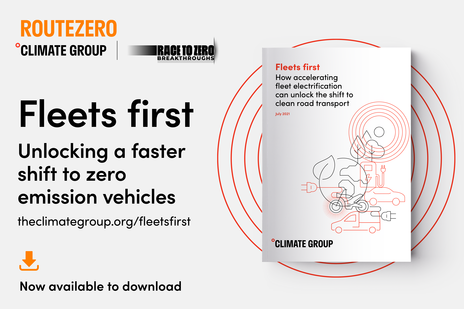
Overview
Our global analysis with international sustainability consultancy SYSTEMIQ has found that fleet vehicles could be instrumental in bringing about a wider shift to clean road transport, and it’s possible for their electrification to happen on an accelerated timeframe. It would also deliver transformational benefits for our climate, health and infrastructure.
Key findings
Our analysis – supported by insights from a series of expert interviews with sector specialists, industry, policy experts, and some of the world’s largest fleets – found that a fleets-forward pathway to electrified road transport is both possible and can unlock a wide range of benefits, including:
Climate
Cumulatively cutting over 3 billion tonnes of carbon dioxide (3.1 GT CO2e) by 2030, when compared to the BloombergNEF Electric Vehicle Outlook 2020. This emissions saving is similar to the current annual contribution of India, the world’s third highest emitter.
Affordability
Increasing the size of the second-hand electric vehicle market by 40% in 2030 and over 70% in 2040. This would mean an extra 7.2 million second-hand EVs on the market in 2030, increasing choice and affordability for individuals and organisations without ready access to finance.
Health
Avoiding an estimated 120,000 premature deaths annually from transport-related air pollution in 2030, with the greatest benefit occurring in densely populated urban areas in the Global South. This would also help to save on global healthcare costs caused by air pollution, which contributes to trillions of dollars of spending every year.
Infrastructure
Contributing to the build out of an additional 4 million public charging units - enough to meet the needs of 29 million EVs. This is because meeting the charging demand under the accelerated scenario would on average require an extra 14,000 charging units to be installed every day through to 2030, over and above current projections.
Innovation
Creating scale of demand to drive down battery costs by an extra 14%. This would also help to bring forward the tipping point where EVs reach purchase price parity with equivalent internal combustion engine (ICE) vehicles by around one year, occurring as early as 2023 in some markets and vehicle categories.
"Reaching net zero by the middle of the century requires a step change across all sectors. And switching to electric vehicles is a crucial part of the action we need to take to hit this goal and keep the target of limiting global temperature rise by 1.5°C alive.
I am encouraged by research such as this which shows that change is within reach. We must all work together ahead of COP26, and beyond, if we are to secure a greener future."
"Reaching net zero by the middle of the century requires a step change across all sectors. And switching to electric vehicles is a crucial part of the action we need to take to hit this goal and keep the target of limiting global temperature rise by 1.5°C alive.
I am encouraged by research such as this which shows that change is within reach. We must all work together ahead of COP26, and beyond, if we are to secure a greener future."
Fleets first report.pdf
Size: 6.57 MB
Date added: 09/07/21